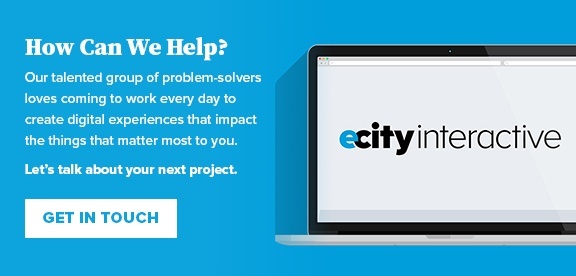
It’s important when beginning any web project that you build a relationship with your Digital Project Manager (DPM). The DPM will focus on understanding your organization’s specific business goals and pain points and will facilitate the creation of a website to effectively address those issues. We will be the bridge between your team and ours and will be your ally throughout the process. A great DPM is like a great website – an effective one will work with you to better your business in a variety of important ways.
Problem Solving
A website is a marketing tool used to solve some of your business’s biggest problems – how to make your goods or services easily found, understood, and obtained by your target audience. By solving these problems, your website will ultimately increase your bottom line and make your business more profitable.
To create an effective website, a good DPM will show you how to solve those problems using the best solutions possible while working within your budget and time frame. Every organization and every project is different. DPMs must think creatively to solve the unique problems that each of our clients bring to the table.
Collaboration
A website can be used as a tool for collaboration between your organization and your audience. When you offer products and services on your site, your customers effectively vote for the best items with their purchases. Feedback functionality like reviews and star ratings help customers to voice their opinions on your offerings. Your business can then adjust to provide those items most in demand. Together, you and your customers have collaborated to produce a more productive business using your website.
Any great DPM will also value and promote collaboration throughout a project. We understand that you have various stakeholders with differing goals and opinions and that our own team of experts has ideas about where to take your site. The job of the DPM is to get everyone on the same page, sorting through those opinions to get to a place where your website can best serve its users.
Big Picture + Attention to Detail
A well rounded website will express your company’s big picture – your brand, your look and feel, and your overall mission – as well as all the details about your products or services that users are looking for. The big picture helps a user understand who you are and should impart a sense of trust and authority in your brand. The details provide the information a user needs move through the buyer’s journey and on to a conversion.
An effective DPM shares this balance of big picture understanding and attention to detail. Unlike more specialized roles, we need a solid understanding of where your organization and your website have been, where they are, and where they are going; who is involved and what each person’s priorities are; and what your overall timeline and budget look like. Attention to detail comes in our day to day work – juggling the needs of our designers, developers, marketing and UX professionals, and the client team.
Working With Constraints
A website is made up of code that displays on digital screens in the form of words and images. Somehow, this code needs to be able to represent all of the intangible things that make your organization great – quite a constraint! An effective website does this well by fusing design, functionality, and messaging to convey your brand’s unique personality and value to your audience.
Timelines, budgets, and resources all create boundaries around what is possible when building a website. A DPM’s job is to manage those constraints in a way that meets the needs of our client and produces a website that is an effective business tool. These constraints may shift and change throughout the course of a project, and an effective DPM will provide excellent service and stay true to the project goals while rolling with those punches.
Responsive + Adaptive
A responsive website adapts to the size of the screen that it is being displayed on – recognizing the device a user is on and adjusting content accordingly. On your phone, more important content like the main navigation, forms, and calls to action are moved to the top and sized to properly fit the screen. Less vital content is pushed down or removed entirely. These responsive adjustments allow users on their phones to find and view the information they need without too much scrolling or clicking, and without having to zoom into their browser.
An effective DPM is also responsive and adaptive. Like a website, a DPM should be able to adjust to each client’s particular needs and to respond to their business goals with solutions that fit their organization. Tools, processes, and resources that suit a large scale company might be overkill for a small business. A good DPM knows this and will adapt to the needs of the client and the project to create a website that exceeds expectations.![]()




